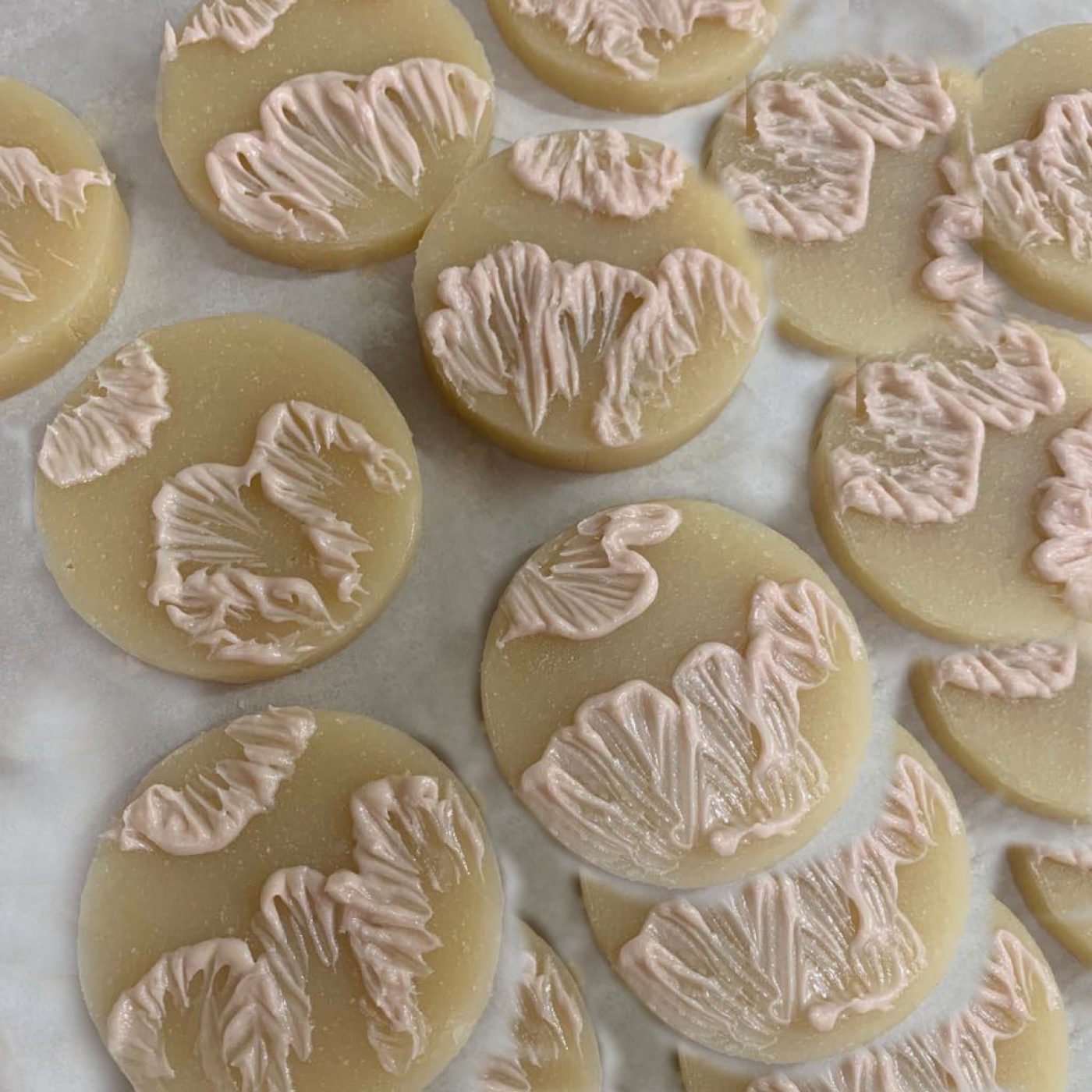
Soapmaking 101: Soapmaking Terminologies

I had to be familiar with these terminologies when I started making soaps.
This list is by no means complete.

This is the chemical reaction when the oils and fats come into contact with lye.
The oils and fats are converted into soap and alcohol.

This is an online tool that allows you to calculate the ratios of the oils and lye.
There are several soap calculators available online and you may want to try and see what works best for you. But I have always used SoapCalc. It is just so easy to use.

This describes the extra amount of oil in the soap to enhance its moisturizing properties.
How do you come up with Super Fat?
You can do this by adding oil and maintaining the lye or by having the same amount of oil and reducing the lye.
Complicated? Don’t be discouraged.
The Soap / Lye Calculator can do this for you. Look for Super Fat / Water Discount and input the desired percentage.
I normally use 5% super fat suggested by the system. I have experimented with more than 5% but I find that my soaps easily become rancid because of the unsaponified oils.

Oils and lye are combined using a stick blender and without any heat intervention.
When the mixture reaches trace, pour into the mold.
Leave to saponify for about 24 to 48 hours and take the soap out of the mold. Depending on the oils used (some are soft oils) and mold used, unmolding can take longer.
Allow for curing.

Oils and lye are also combined and heated over a slow cooker.
Saponification takes about 2 hours, after which you pour the batter into the mold.

This is a soap base made out of oils or butters (fatty acids), glycerin and other ingredients. You can buy this ready-made soap base and use it immediately.

In the cold process method, trace happens when you mix the oils and lye. This is the point when the consistency changes and the mixture starts to thicken. Trace can be light (like a pancake batter), medium, or thick.

They make up the ingredients of the oils and butters. Fatty acids determine the quality and benefits of the soap used. Some examples of fatty acids are Lauric, Oleic, Linoleic.
The Soap / Lye Calculator computes the fatty acids and show the soap bar quality.
I recommend reading about these to understand about the properties of the fats.
Susan Parker’s Power of the Seed is a very good resource.

Lye is the chemical used to make soaps.
Lye can be Sodium Hydroxide (NaOH) or Potassium Hydroxide (KOH).
Sodium Hydroxide (NaOH) is used for solid soaps while Potassium Chloride (KOH) is used to create liquid soaps.
Some use a combination of the two but I have not tried it yet.
Select the type of lye on the Soap / Lye Calculator.
It is important to follow lye safety precautions because it can cause physical injury, like chemical burns.

This is the white ash-like film on the soap. It happens when unsaponified lye reacts with carbon dioxide.
To avoid having soda ash, I spray alcohol on top of the soap immediately upon pouring into the mold. Then I cover it with a towel. This keeps the soap warm.
Soda ash does not mean that the soap has gone bad. You can still use it although it does not look “nice”. Soda ash can appear in about 2-3 days.
Soda ash is sometimes unavoidable. To remove it, wipe off with a damp cloth or paper towel or use a soap shaver.

This is the stage in saponification when the soap starts heating up in the mold.
The color becomes translucent.
Sometimes, the soap becomes so hot and cracks appear in the middle.
This happened to me before when I put powdered goat’s milk. When I made a new batch, I put the soap in the freezer for about 30 minutes to cool down. No more cracks!

This means allowing the water to evaporate so the soap becomes harder. The curing process takes about 4 – 6 weeks.
I usually allow my soaps to cure for 8 weeks, sometimes longer.
This is a sample soap recipe. I run my recipe through the Soap Calculator.



